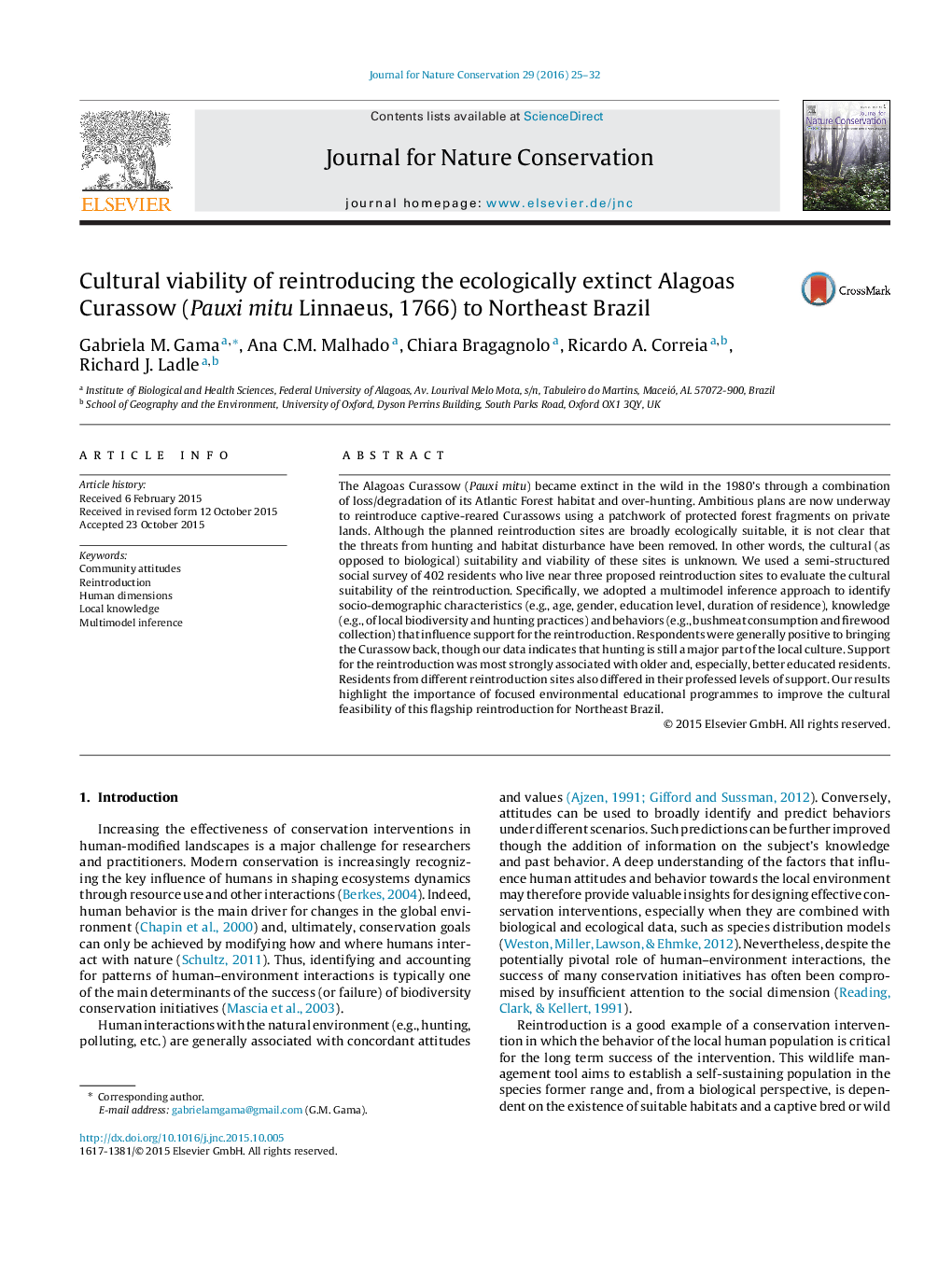| Article ID | Journal | Published Year | Pages | File Type |
|---|---|---|---|---|
| 4399733 | Journal for Nature Conservation | 2016 | 8 Pages |
The Alagoas Curassow (Pauxi mitu) became extinct in the wild in the 1980's through a combination of loss/degradation of its Atlantic Forest habitat and over-hunting. Ambitious plans are now underway to reintroduce captive-reared Curassows using a patchwork of protected forest fragments on private lands. Although the planned reintroduction sites are broadly ecologically suitable, it is not clear that the threats from hunting and habitat disturbance have been removed. In other words, the cultural (as opposed to biological) suitability and viability of these sites is unknown. We used a semi-structured social survey of 402 residents who live near three proposed reintroduction sites to evaluate the cultural suitability of the reintroduction. Specifically, we adopted a multimodel inference approach to identify socio-demographic characteristics (e.g., age, gender, education level, duration of residence), knowledge (e.g., of local biodiversity and hunting practices) and behaviors (e.g., bushmeat consumption and firewood collection) that influence support for the reintroduction. Respondents were generally positive to bringing the Curassow back, though our data indicates that hunting is still a major part of the local culture. Support for the reintroduction was most strongly associated with older and, especially, better educated residents. Residents from different reintroduction sites also differed in their professed levels of support. Our results highlight the importance of focused environmental educational programmes to improve the cultural feasibility of this flagship reintroduction for Northeast Brazil.
